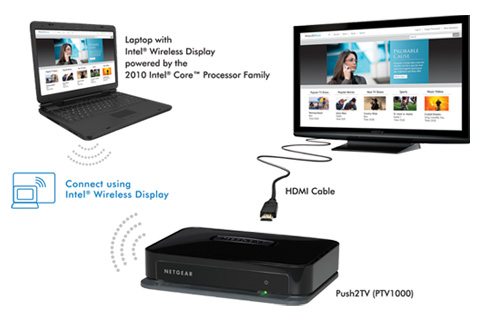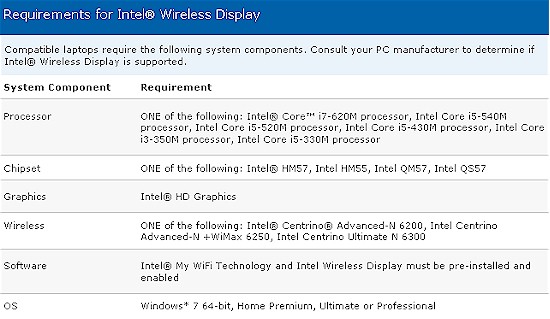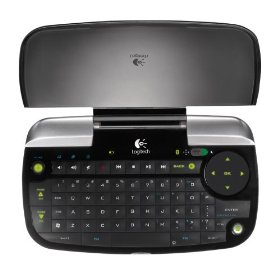Intel and NETGEAR tried to puff up their announcements of the Intel Wireless Display technology and NETGEAR’s PTV1000 Push2TV, the first adapter to support it. But it doesn’t seem like much of an advance to me.
Intel’s spiffy "new" Wireless Display technology is basically a pre-standard implementation of the upcoming Wi-Fi Direct spec that the Wi-Fi Alliance went public with last October.
Wi-Fi Direct, in turn, is a roll-up of easy to use peer-to-peer Wi-Fi connection technology developed by Intel (My WiFi) and Atheros (Direct Connect).

Not the future of wireless HD streaming
NETGEAR actually called its PTV1000 Push2TV" the industry’s first commercially available Wi-Fi Personal Area Network (PAN) or Wi-Fi Direct solution" in its announcement. But when the Wi-Fi Alliance got wind of this, they made NETGEAR remove the reference and issued the statement below:
Wi-Fi Alliance Statement: Use of Wi-Fi Direct(tm) Terminology
January 8, 2010 – At CES, Netgear Inc. issued a news release which introduced a wireless TV adapter. At the time of its release, the announcement included a statement that the Netgear Push2TV product was "the industry’s first commercially available… Wi-Fi Direct solution." This statement was included in error and has since been corrected.
No product is designated as Wi-Fi Direct at this time. Wi-Fi Direct is a certification designation reserved for products which have passed Wi-Fi CERTIFIED(tm) testing for adherence to the underlying specification. This testing will not be available until mid-2010.
But Wi-Fi Direct compliant or not, the product seems to be a solution in search of a problem, and a way too specific solution, at that.
First, check the Wireless Display requirements below. Basically, this is all new stuff, intended to help Intel sell more laptops, instead of providing a solution for even a portion of its sizable installed based of HD-capable systems. You even need new Centrino wireless adapters instead of the widely-installed and perfectly capable Wi-Fi Link 5100 and 5300.

All new stuff required
If this isn’t enough to put you off actually buying this "solution", then consider that the NETGEAR Push2TV adapter operates in the overcrowded 2.4 GHz band only! NETGEAR has delayed the release of as much of the FCC docs as possible until March 18 and neglects to mention the frequency band, or even 802.11 standard that the adapter uses on its product page and downloadable data sheet. But the FCC test reports filed, show data for 802.11b/g and 2.4 GHz N only.
Maybe it’s me, but this "solution" looks like plenty of hassle (and cost) to achive the alleged "benefit" of not using a long HDMI cable (here’s a 25 foot one for 9 bucks).
A more generally applicable alternative (and certainly cheaper at around $120) would be to use a short HDMI cable to tether your notebook’s HDMI output to your HD display and a Logitech diNovo Mini to remotely control it. The diNovo even comes with its own USB dongle if your notebook doesn’t have built-in Bluetooth.

A more practical and cheaper way to go for "wireless display"
Since the HD signal travels only through reliable, speedy cable and only the control is done wirelessly, I’d say this is a much better way to go. But I suppose it wouldn’t help Intel to sell more new chipsets, would it?
